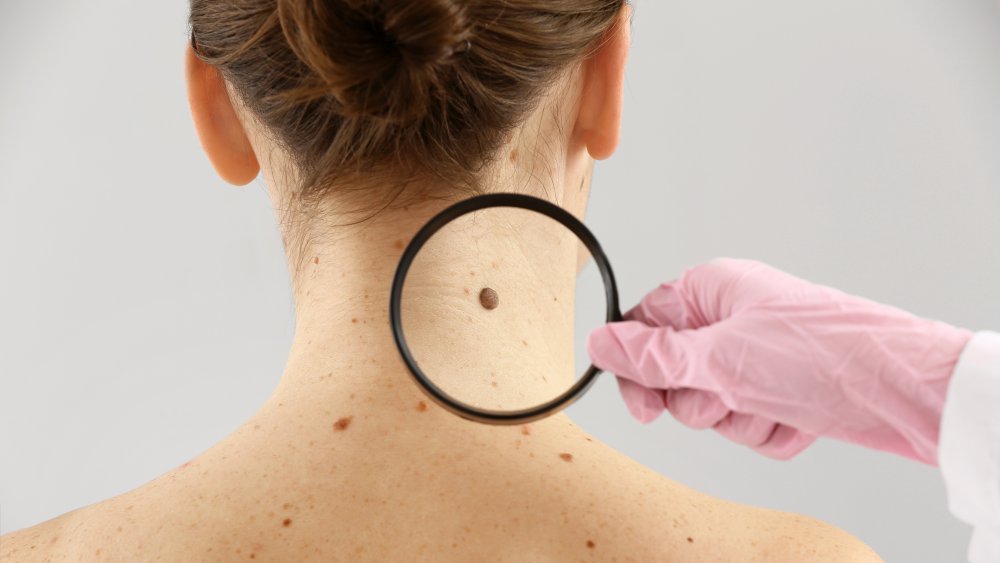Doctor Explains When You Should Be Concerned About Your Mole
If you're born with a mole, or develop one, you need to keep an eye on it. The concern is melanoma, the deadliest type of skin cancer. However, if melanoma is found early, it can be removed before spreading to your lymph nodes and organs. Skin cancer is the most common type of cancer, according to the Skin Cancer Foundation, and early detection is key.
You may have heard of moles being called beauty marks. Many celebrities have beauty marks, including Blake Lively, Kate Upton, Cindy Crawford, and Jennifer Lawrence. People call them beauty marks when they are on the face, but they're still moles. And if you have one, you're not alone — most people have about 10 to 40 moles on their skin (via the Mayo Clinic).
You also need to get to the dermatologist if you notice a new mole or a new colored spot on your skin. Most melanomas, 70 to 80 percent, appear on normal skin, and 20 to 30 percent are found on existing moles (via the Skin Cancer Foundation).
How to monitor your mole
"Although most skins spots are benign, one should always follow the ABCDE rule and never assume any questionable spot is benign," Dr. Emily Kirby, a board-certified plastic surgeon tells The List. Remember that melanomas can appear anywhere on your skin. You can even get melanomas in your eyes or your fingernails. According to the Skin Cancer Foundation, there is a 99 percent survival rate for melanomas that are detected early. See your dermatologist immediately if your mole has any of these signs of melanoma or if it changes in any way.
Asymmetry: Draw an imaginary line through the middle of the mole. "You should be able to fold a mole in half and it should be even on both sides," Dr. Sperling tells The List.
Border: It could be a melanoma if the border of the mole is uneven. Benign moles generally have smooth edges.
Color: Benign moles are usually a shade of brown or black. You could have a problem if it changes color, or if your mole has more than one color. For example, if your mole has different shades of colors or is black and brown, that's a concern, says Dr. Sperling.
Diameter/Dark: It's best to detect a melanoma while it's small, but it's especially worrisome if it's the size of a pencil eraser (about a quarter of an inch or six millimeters in diameter). Also, there is a rare melanoma that is colorless (via the Skin Cancer Foundation). Dr. Sperling says that any change in diameter or size is concerning.
Evolving: Look for any changes in color, shape, size, or elevation. Itching, bleeding, or crusting are also warning signs of melanoma.


